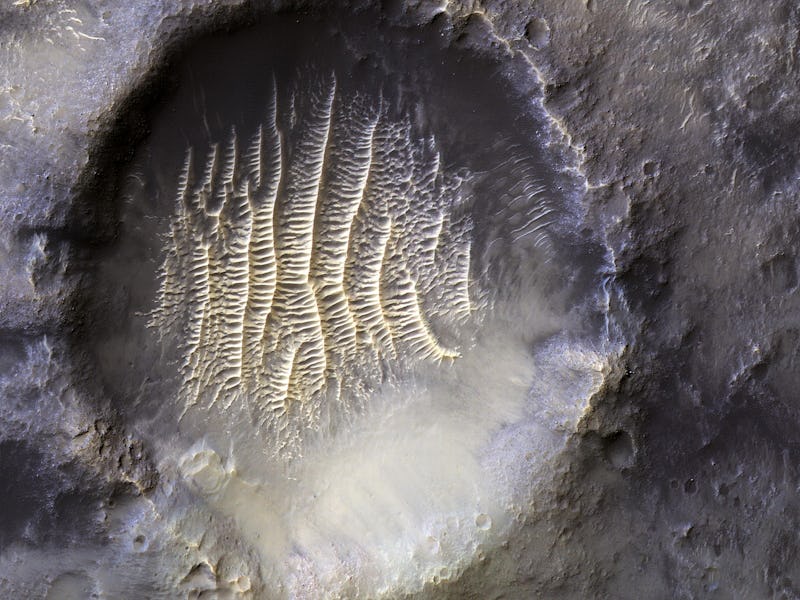Look! NASA takes a stunning view of Mars' "prime meridian"
The wind-carved ridges provide another fascinating sight.

Just a few degrees south of the equator of Mars, there’s a pockmark called the Airy Crater. It's about 27 miles in diameter and whatever asteroid created it struck quite a blow. But within Airy lies Airy-0 — a sub-crater precisely at 0 degrees Longitude.
In an Instagram post, NASA shared the view of Airy-0 — which was chosen to be the exact spot that astronomers would call the prime meridian, where measurements of East and West begin. Unlike an equator, the line is arbitrary. But it helps scientists determine coordinates. Airy-0, as a subfeature of Airy, seemed like the perfect spot to plop it.
The crater also shows a series of ridges, which are Martian sand dunes. As on Earth, these dunes are created by the winds of Mars depositing fine particles, according to Paul Byrne, a planetary scientist at Washington University. This gives the interior of the crater the appearance of cantaloupe skin. You definitely should eat it though, given the number of toxic perchlorates in some areas of Mars.
As for the erosion at the bottom rim of the crater, Byrne suspects that it’s mass wasting, something akin to a rock or landslide. Other craters on Mars have features associated with water or dry ice, but that doesn’t appear to be the case here. “If there was water or CO2 ices there, they've long since sublimated, although I don't know if they'd survive the impact formation event itself,” Bryne tells Inverse.
The photo was taken by the Mars Reconnaissance Orbiter on October 27, 2021. MRO has been in orbit around Mars since 2006, and is both the primary set of eyes on Mars from space as well as one of two communications relayers for Mars missions on the ground alongside the 2001 Mars Odyssey orbiter.
Both spacecraft have been in orbit around Mars for quite some time, and while they continue to function, NASA has plans to eventually send a new orbiter as a failsafe. But an initial plan to launch one in the fall of 2022 was scrapped in favor of a mission that would be paired with a Mars sample return, to launch in the late 2020s. The Mars Atmosphere and Volatile Evolution orbiter may eventually have its orbit dropped as well in order to serve as an interim communications relay.
This article was originally published on